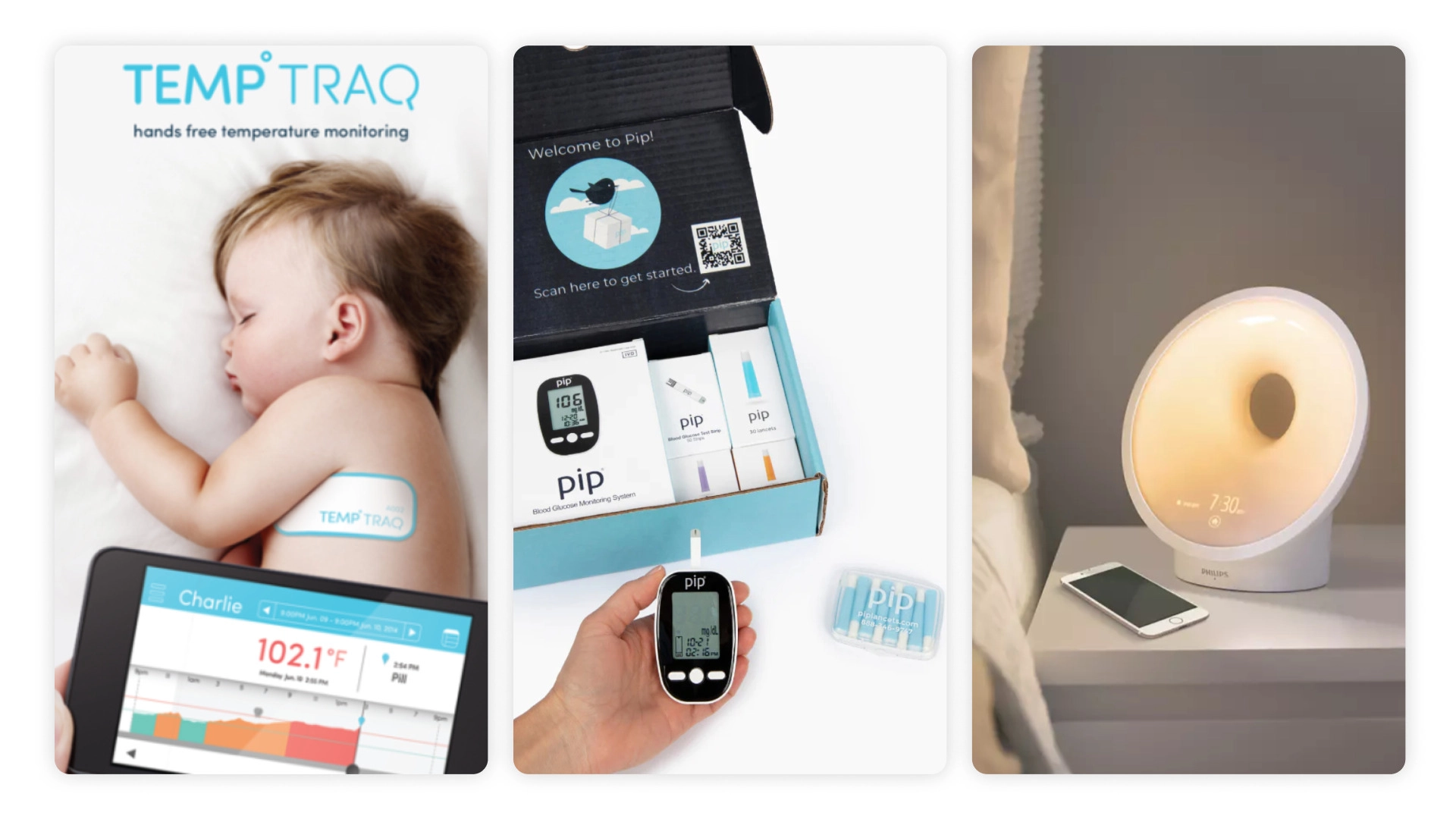

Wearable Technologies in Healthcare
During the period spanning from 2020, wearable devices emerged as a prominent catalyst for growth within the healthcare technology industry. These innovative gadgets, seamlessly integrated into our daily lives, played a pivotal role in revolutionizing how we approach health management. In light of these dynamics, this article aims to delve into the intricacies of this segment.
What is Wearable Health Technology?
Wearable devices, or wearables, refers to a category of electronics designed to be worn on the body, typically as accessories or clothing, with the purpose of monitoring and tracking various aspects of a person’s health and well-being. These gadgets incorporate sensors, wireless connectivity, and data processing capabilities to collect and analyze data about the user’s physical activity, vital signs, and other health-related parameters.
Wearable health technology has gained significant popularity in recent years due to advancements in miniaturization, sensor technology, and data analytics. Some common examples of wearable devices include fitness trackers, smartwatches, heart rate monitors, sleep trackers, smart clothing, etc.
The collected data is typically synced with companion mobile health applications or computer software, allowing users to view and analyze their real-time health data. This information can help individuals gain insights into their daily activities, set goals, track progress, and make informed decisions about their lifestyle and well-being. Wearable health technology also holds potential in remote patient monitoring, chronic disease management, and promoting preventive healthcare.
Benefits of Wearable Technology
Wearable devices have become increasingly popular in the healthcare segment due to their potential to improve various aspects of well-being. Here are some of their advantages in healthcare:
Continuous monitoring: Wearable devices provide real-time health data on heart rate, blood pressure, body temperature, sleep patterns, etc. This continuous monitoring can help detect abnormalities or changes in health conditions promptly.
Early detection and prevention: By continuously monitoring health metrics, they can help identify potential health issues at an early stage, reducing the risk of more serious health complications.
Personalized insights: Users can gain a better understanding of their health patterns, exercise habits, sleep quality, and other lifestyle factors.
Remote patient monitoring: This capability is particularly beneficial for individuals with chronic conditions or those in postoperative or post-acute care, as it allows healthcare providers to track patients’ progress, ensure adherence to treatment plans, and intervene if necessary.
Fitness and wellness tracking: They track users’ physical activity, monitor calorie expenditure, and assess their overall fitness levels. This data can motivate individuals to maintain a healthy lifestyle.
Medication adherence: Some wearables can remind users to take their medications at the appropriate times. This feature is especially valuable for individuals with chronic diseases.
Data-driven healthcare: The vast amount of data collected by health-tracking devices can be harnessed to drive research and advancements in healthcare. Aggregated and anonymized info can help researchers and healthcare providers gain insights into population health trends, and improve disease management strategies.
Health & Fitness Wearables: Mobile Health Applications & Devices That Are Already Booming

PIP: This small device is designed to monitor stress levels and assist users in achieving a state of calmness when needed. By tracking electrodermal activity, PIP detects changes and communicates with a mobile app to provide appropriate signals and guidance.
TempTraq: Revolutionizing temperature monitoring, TempTraq offers a comfortable patch that can be worn for up to 48 hours, continuously tracking body temperature. It’s popular among parents for easily scanning their child’s temperature without disturbance.
Philips SmartSleep: Developed by researchers and doctors, Philips SmartSleep is a headband designed to enhance deep sleep quality. Equipped with biometric sensors, it monitors the body’s activity during different sleep stages and relays the information to a mobile application.
What Lies Ahead?
According to a recent study, the global wearable devices market is projected to grow, reaching a value of $62.82 billion by 2025. This evolution indicates an unreal demand for wearables in the healthcare sector.
This field is constantly evolving and holds great potential for the future. Here are some trends and potential advancements that lie ahead:
Enhanced monitoring and diagnostics: Wearables will continue to improve in terms of their monitoring capabilities and accuracy, leading to better diagnostics and personalized healthcare.
Preventive healthcare: Devices will shift from reactive monitoring to proactive prevention. They will use advanced algorithms and artificial intelligence to analyze data patterns and provide personalized recommendations for maintaining a healthy lifestyle, preventing diseases, and managing risk factors.
Advanced sensing and miniaturization: Such gadgets will become more discreet, comfortable, and seamlessly integrated into everyday life. For example, smart clothing and smart tattoos with embedded sensors may become more prevalent, enabling continuous monitoring without the need for separate health-tracking devices.
Mental health monitoring: Wearable devices will incorporate features to track stress levels, emotional states, sleep quality, and other indicators of mental health.
Collaborative healthcare ecosystems: Wearables will be integrated into broader healthcare ecosystems, including electronic health records (EHRs), healthcare providers, and insurance companies. Seamless data sharing and interoperability will enable more comprehensive patient profiles and support better-informed medical decisions.
As technology continues to progress, we can expect wearables to play an increasingly important role in disease prevention, diagnosis, treatment, and overall wellness management.
Wrapping Up
The field of wearable healthcare technologies is advancing at a remarkable pace, bringing forth a wide range of innovative products that are transforming the healthcare industry. These include smartwatches, wristbands, intelligent implants, connected medicine dispensers, connected patches, in-hospital monitoring solutions, and many other wearable devices. Such products enable diagnostic tools to be delivered directly to patients, revolutionizing the way healthcare is delivered.
Faq
Can wearable technologies detect medical emergencies?
+Wearables cannot detect all medical emergencies, but they can provide data and early warning signs for some conditions, such as heart diseases, accidents, seizure detection, diabetic management, allergic reactions, and so on. It’s important to note that wearables in healthcare aren’t a substitute for professional medical advice or diagnosis. It’s always best to consult a healthcare professional.
What is the future of wearable technologies in healthcare?
+Wearable technologies in healthcare continue to advance in their capabilities. They will become even more sophisticated in monitoring life parameters. These devices may also incorporate additional biometric sensors to provide a more comprehensive health picture. We may see the development of more discreet wearables, that can seamlessly integrate into daily life without compromising comfort.
Tell us about your project
Fill out the form or contact us

Tell us about your project
Thank you
Your submission is received and we will contact you soon
Follow us
